What kind of Yega Xuefei Fruit Ding Ding belongs to? introduction to the taste of Yejia Xuefei Kongjia coffee beans.

Professional coffee knowledge exchange more coffee bean information please follow the coffee workshop (Wechat official account cafe_style)
For more boutique coffee beans, please add private Qianjie coffee on Wechat. WeChat account: qjcoffeex
I believe that many friends who have just come into contact with coffee will more or less hear the word "Yejia Xuefei Coffee". When I first heard it, did you feel that it was a coffee drink like latte and American coffee?
In fact, Yega Sheffield is one of the most famous coffee growing areas in Ethiopia. Coffee made from Yegashefi coffee beans can be called Yega Sheffield Coffee no matter how it is extracted. Next, Qianjie Coffee will talk to you about this coffee producing area favored by the era of boutique coffee.
Where is Yega Xuefei?
Yegashafi is located in the southwest of Ethiopia, which used to belong to a small town in Gedeo zone district. The town is a natural wetland with rich water resources, with an average annual temperature of 15 to 25 degrees Celsius, and the day-to-night temperature difference formed by the high-altitude geographical environment gives the town the conditions for the growth of Arabica coffee beans.
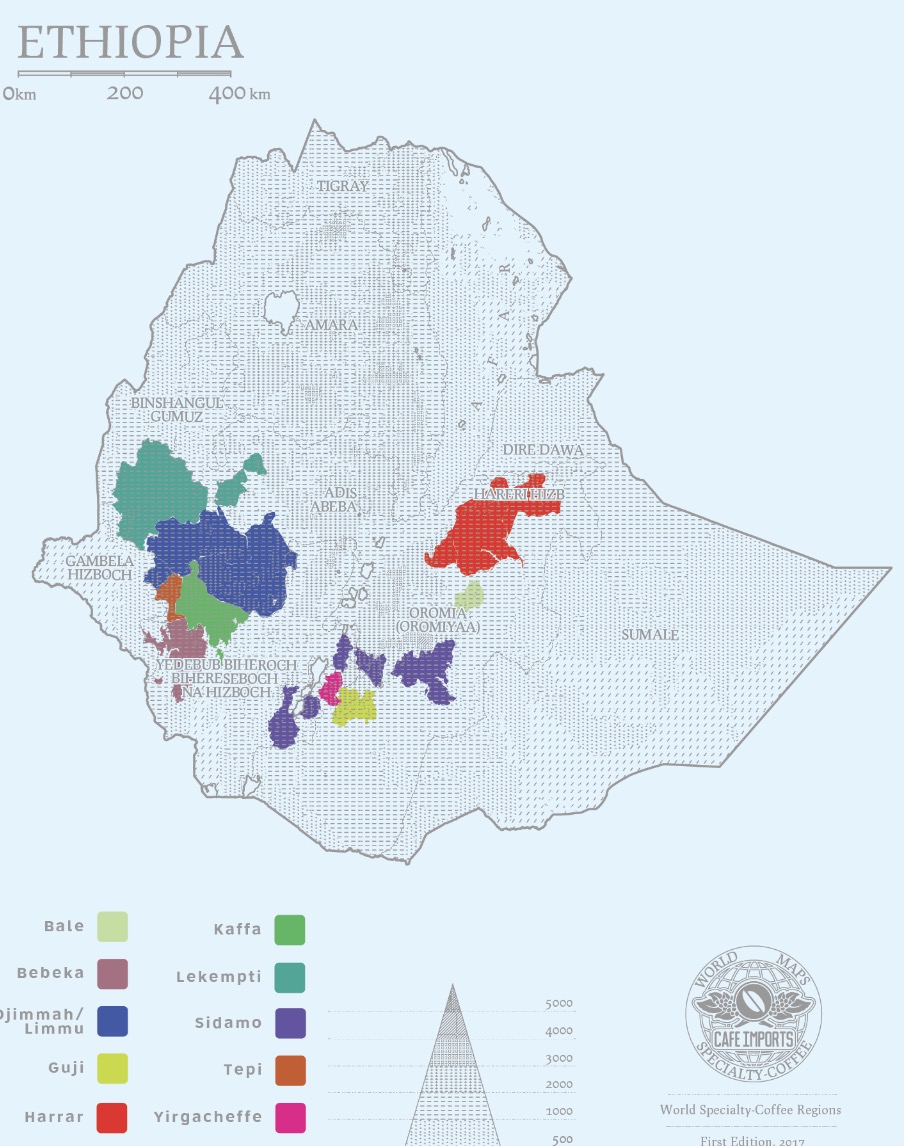
The town of Sidama used to be another famous coffee producing area in Ethiopia. With the growing demand for coffee beans with fresh flavor in the boutique coffee market, the Ethiopian government began to observe the coffee produced by the town.
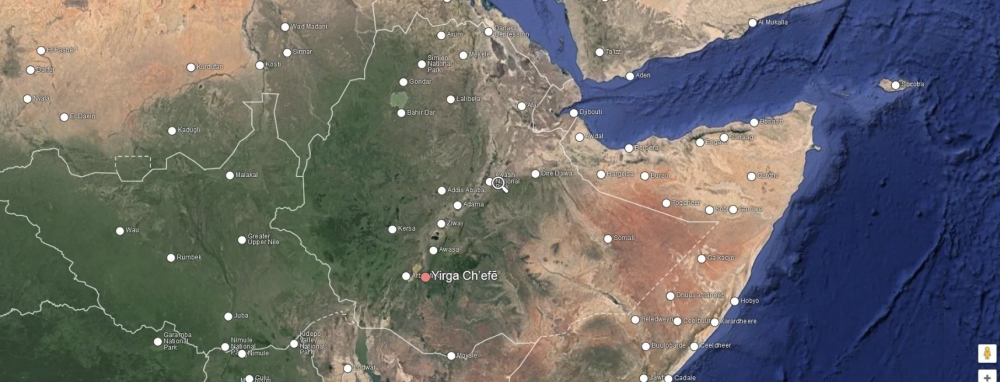
Later, it was thought that the coffee beans produced in the small town of Yejasuefi had a unique floral and citrus flavor, which was different from the coffee beans produced in other parts of Sidamo. and there are also many coffee bean traders who specify beans to be grown in the small town of Yejasuefi, so in 2010, the Ethiopian Commodity Exchange separated the Yegashafi producing area from the Sidamo producing area. That is why it is now known as the Yega Sheffield producing area.
What kind of coffee beans are Yega Xuefei?
Ethiopia, as the birthplace of coffee beans, has so many coffee varieties that can not be subdivided, and many plants have not been genetically identified and named by humans so far. On the other hand, the plants purchased by farmers / distributed by the government are not subdivided and belong to the natural "one pot stew" (mixed planting).
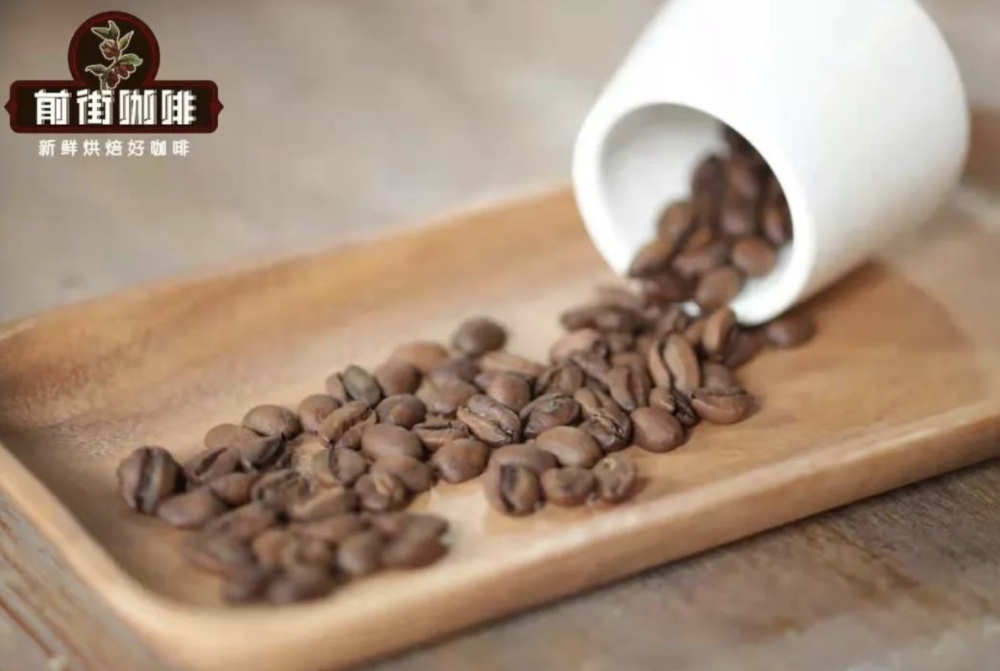
But boutique coffee is about variety, so most of the coffee beans produced in Ethiopia will be marked as Ethiopian native varieties (Heirloom). Also because of the inconsistency of varieties, Qianjie Coffee noticed that the particles of Ethiopian coffee beans were of different sizes.
Why are there so many cooperatives in Yega Xuefei? In order to have a fairer deal!
The Yirgacheffe Coffee Farmers Cooperative Union (YCFCU) YCFCU, founded in 2002, has 24 junior cooperatives and about 50, 000 farmers.
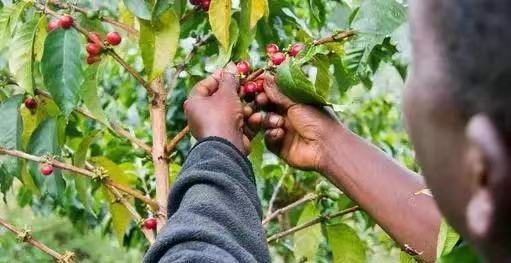
At present, cooperatives are not regulated by the ECX (Ethiopian Coffee Exchange) system of bulk coffee trading, so buyers can select each batch of raw beans according to their preferences and quality, and can be traced back to detailed coffee files, such as producing areas, growers / producers, etc., through direct trade, buyers and farmers can establish a deeper relationship with farmers, in addition to getting reasonable remuneration. Even with material or financial assistance from berry processing machines and equipment, processing facilities, etc., higher quality coffee can be produced.
Since the implementation of the EXC exchange system in Ethiopia in 2008, most raw coffee beans have been sold by competitive bidding under this system, but cooperatives are not under this jurisdiction. They can directly contact buyers, negotiate prices and export. The establishment of cooperatives is to protect their farmers from the low-price exploitation of acquirers, and cooperatives can also provide loan assistance when the economy is in trouble. It is very positive for both farmers and coffee production.

In Ethiopia, there are many cooperatives! Each cooperative handles coffee beans with its own characteristics. Among them, the coffee beans produced by Guodingding Cooperative, Konga Cooperative, Waka Cooperative, Hofsa Cooperative and Edido Cooperative are deeply loved by domestic boutique coffee consumption.
Guodingding Cooperative Gotiti
The Guodingding Cooperative is located in the Waka producing area at the southeast end of Yega Sheffield. It was originally part of the Waka Cooperative under the YCFCU of the Yega Sheffield Alliance. Later, with the pursuit of traceability of raw coffee beans, the "single producing area" was excavated by coffee hunters all over the world.

In 2012, Guodingding, which has about 300 farmers, independently set up the "Guodingding Cooperative". Guodingding Village was the first independent village area, and many small farmers were also members of the Waka Cooperative, so the technology of producing coffee was not to mention. The Guodingding Cooperative is known as the last piece of pure land of Yega Xuefei, so it is also a traditional way to use raw bean treatment (water washing and sun treatment).
Qianjie Coffee sells a coffee bean from the Guoding Cooperative washing treatment, with a citrus-like fresh acidity, white flower aroma, honey sweetness and green tea finish.
Kongjia Cooperative Konga
Kongjia Cooperative is located in Gedeo area. Most of the soil in Gedeo area has high iron content, and the soil depth is more than 1.5m. Deep soil is good for coffee trees to take root and absorb water and nutrients from the soil.
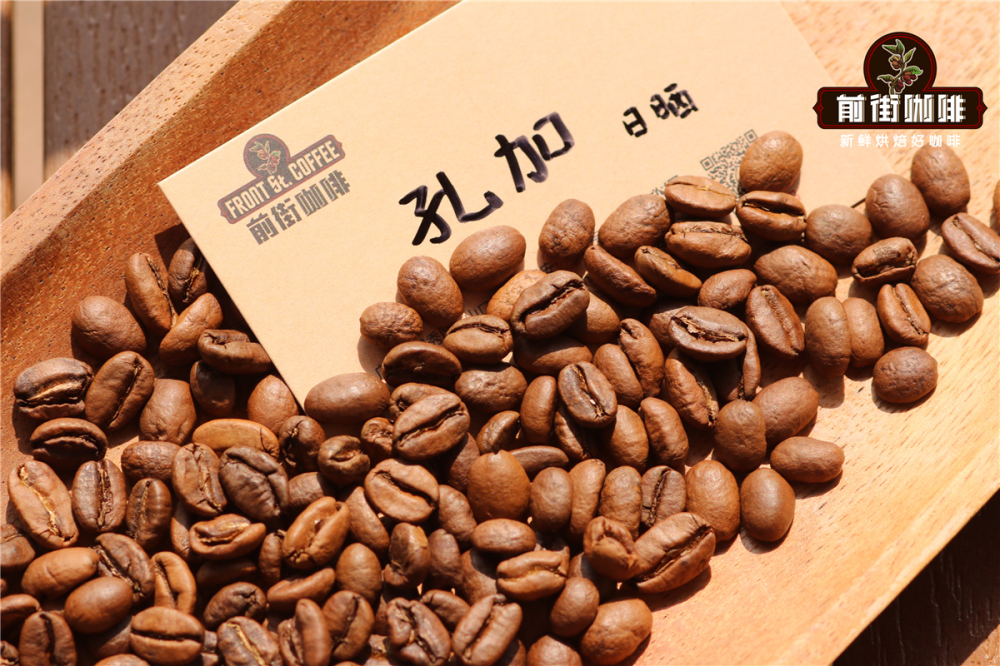
Iron is a trace element necessary for the synthesis of chlorophyll. Iron-deficient plants cannot synthesize chlorophyll even under the condition of light. Qianjie believes that the soil with high iron content makes coffee trees produce enough chlorophyll, so that coffee trees can better carry out photosynthesis to store nutrients, thus improving the quality of coffee fruits.
Qianjie Coffee sells a kind of sun-treated coffee beans from the Conga Cooperative with citrus acidity, berry juice, honey sweetness and creamy smoothness.
Woka Cooperative Werka
The Waka Cooperative is under the control of the YCFCU Cooperative Union. Founded in 2005, the Waka Cooperative is located in a remote area of the Yega Sheffei producing area, 75 kilometers away from the local coffee distribution town of Dilla, and the roads outside are in poor condition.
There are 20 kilometers of dirt roads from the cooperative to the main tarmac road. The cooperative is made up of 305 farmers, with a planting area of about 763 hectares and an annual output of nearly 460 tons. Because no chemical fertilizers or pesticides are used in coffee cultivation, Waka farmers have also obtained the Skal organic coffee certification recognized by the European Union.
Coffee is mainly grown by more than 700 local small farmers, using the traditional washing and sun treatment, because the flavor and taste of Waka coffee is outstanding with the characteristics of the producing area, which makes Waka coffee one of the representatives of Ethiopian boutique coffee.
Qianjie Coffee sells a kind of washed coffee beans from the Waka Cooperative, with flavors of lemon, grapefruit-like acidity, ginger flowers, honey sweetness and Tieguanyin tea.
Hafursa of the Hofsa Cooperative
Hofsa, also known as Harsa, was originally the name of a village in the town of Ethiopia. When Ethiopia began to set up cooperatives to help farmers in 1975, it was the first to set up the Hofsa Cooperative, which can be said to be the "vanguard" of the movement.
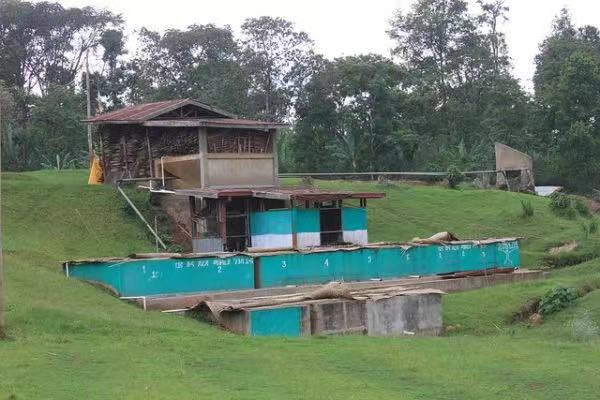
The sources of coffee berries in the Hofsa cooperative processing plant are mainly from the hillside of the village of Hofsa and located in the west of the plant, from 1850m to 2100m above sea level, and partly from the hillside near the village of Konga in the south of the plant, and from 1870m to 2000m above sea level.
The locations of the two regional coffee plantations are excellent in terms of elevation and slope, and this has become the basic condition for cooperatives to produce excellent raw coffee beans.
Edido Cooperative IDIDO
The Didot Cooperative is located in a high-altitude valley in the town of Yegashefi, with annual rainfall of about 1400-1800 mm. Local farmers grow coffee at an altitude of about 2,000 meters. Thanks to the cool mountain air that allows coffee to slowly ripen in good soil conditions and ecosystems, small farmers then harvest ripe red fruits every year from December to February.
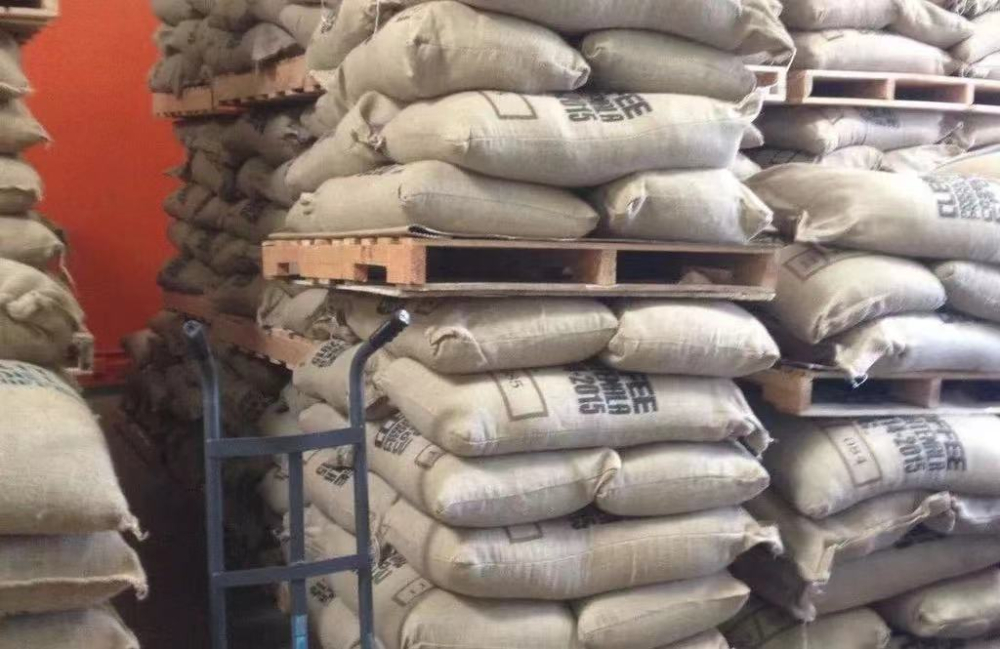
Like other cooperatives, Ediot has the quality conditions to produce one or two good coffees: 1. High altitude 2. Excellent processing technology 3. High nutrient soil 4. Native species of Ethiopia. Through the cultivation of such a high-quality geographical environment, Qianjie found that the coffee beans produced here have a charming floral fragrance, which can be said to be a bit like Rosa coffee.
Yejia Coffee Coffee treatment
In the Yegashafi area, coffee beans are usually treated in the sun and washed in water.
The biggest difference between the washing treatment and the sun treatment is that the washing treatment will want to peel off the peel and pulp of the coffee, and put it into a clean pool for fermentation to remove the residual mucus, so the drying time of the water-washed coffee beans is shorter, the overall flavor will be cleaner, and the acidity will be more obvious.

On the other hand, because the sun-treated coffee beans retain the peel and pulp for direct sun-drying, the sugar in the pulp will ferment at high temperature, so the coffee beans will absorb these fermented flavors, and then the sugar in the pulp will be transferred to the beans to a certain extent, so the sun-treated coffee beans will have a light fermented aroma and a more obvious sweetness.
How do you bake Yega Coffee beans?
The flavor of Yejashefi coffee is characterized by its bright acidity and faint floral aroma, so Qianjie coffee uses light roasting when roasting Yejashefi coffee beans.
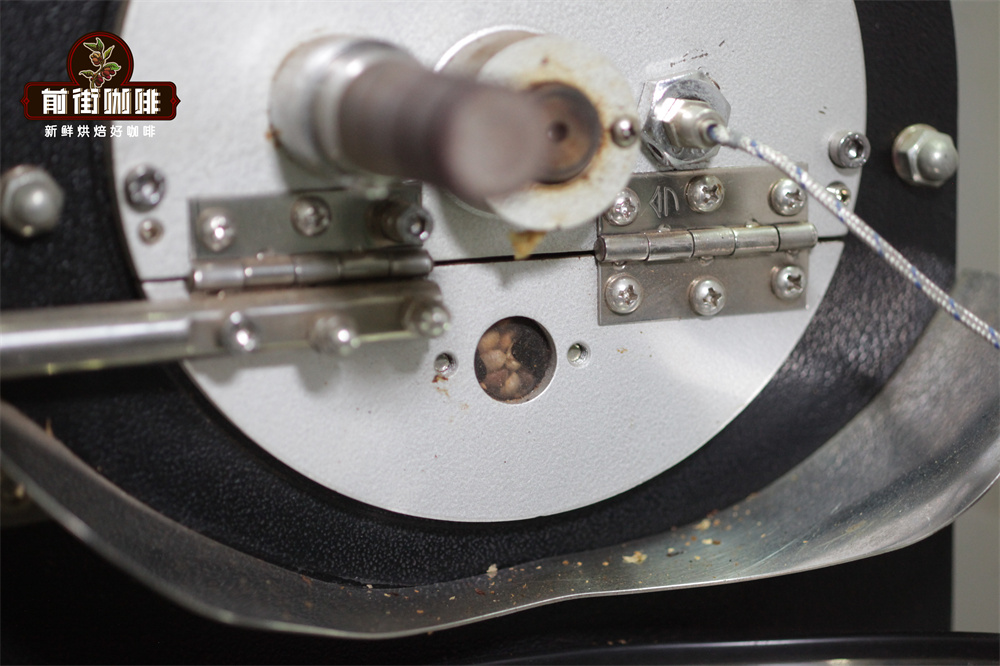
In order to make every partner feel the charm of freshly roasted coffee and feel the most comprehensive flavor of coffee, Qianjie coffee is guaranteed to be delivered within 5 days of roasting.
How to brew Yejia Xuefei coffee beans?
Because the high altitude will make the texture of the coffee beans more compact (harder), and most bakers will use shallow roasting when roasting Yega Chuefei coffee beans, retaining the characteristics of freshness and bright acidity.
Therefore, during coffee extraction, the release of soluble substances in coffee is slow, so you can use medium-fine grinding (fine granulated sugar size / 80% screening rate of China No. 20 standard sieve) and extract with a water temperature of 90-92 degrees.
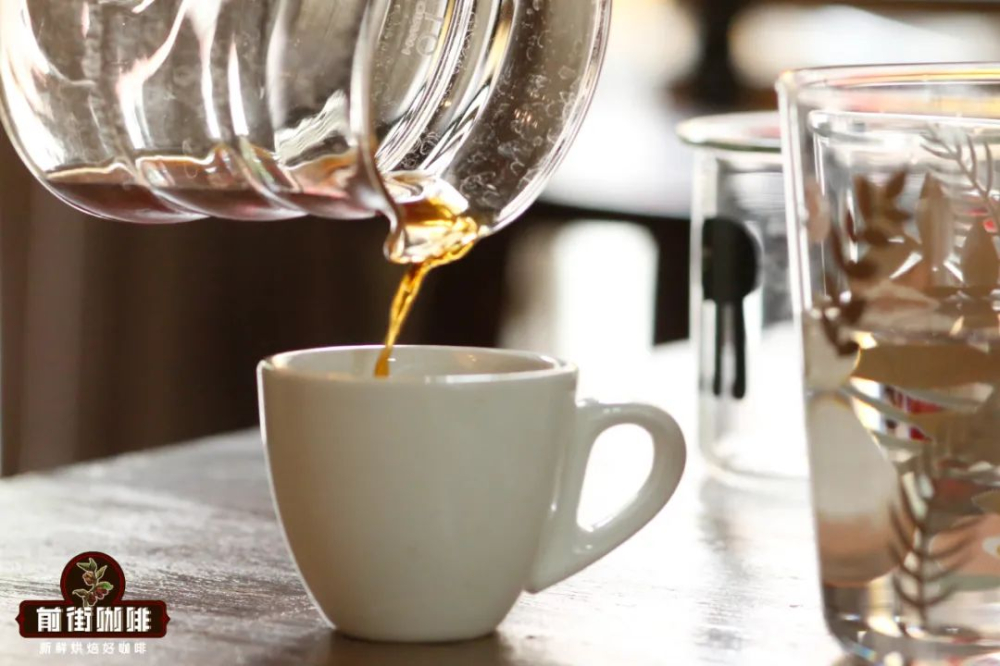
Qianjie coffee recommended brewing ratio is 1:15, with three-stage water injection: start timing, the first injection to 30g water, carry out 30 s of steaming; then start the second stage of small water round injection with water to 125g, wait for the powder bed water to half, and then continue small water circle injection to 225g, after all the dripping filtration is finished, the total extraction time is about 2 minutes 00 seconds-2 minutes 10 seconds.
Important Notice :
前街咖啡 FrontStreet Coffee has moved to new addredd:
FrontStreet Coffee Address: 315,Donghua East Road,GuangZhou
Tel:020 38364473
- Prev

Introduction to the characteristics of sun-dried Yega Chuefei Fruit Ding Coffee beans Flavor description of Yega Xuefei hand flushing method
Professional coffee knowledge exchange more coffee bean information please follow the coffee workshop (Wechat official account cafe_style) in front of the street Yega Xuefei Guoding Village BankoGotitii became independent from the large Waka cooperative in 2012, many self-employed small farmers are also
- Next

Yega Xuefei coffee hand brewing parameters Yega Xuefei brewing method sharing
Professional coffee knowledge exchange more coffee bean information please follow the coffee workshop (Wechat official account cafe_style) in front of the street Yega Xuefei hand parameters sharing beans Yega Xuefei is a small town in Ethiopia, elevation of 1700-2100 meters, can be said to be one of the highest coffee producing areas in the world, in other words, Yega Xuefei production area originally belonged to the Sidamo producing area
Related
- Beginners will see the "Coffee pull flower" guide!
- What is the difference between ice blog purified milk and ordinary milk coffee?
- Why is the Philippines the largest producer of crops in Liberia?
- For coffee extraction, should the fine powder be retained?
- How does extracted espresso fill pressed powder? How much strength does it take to press the powder?
- How to make jasmine cold extract coffee? Is the jasmine + latte good?
- Will this little toy really make the coffee taste better? How does Lily Drip affect coffee extraction?
- Will the action of slapping the filter cup also affect coffee extraction?
- What's the difference between powder-to-water ratio and powder-to-liquid ratio?
- What is the Ethiopian local species? What does it have to do with Heirloom native species?

